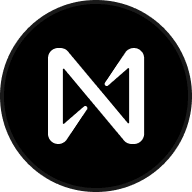Pris för Near Protocol
i USDOm Near Protocol
Friskrivningsklausul
OKX tillhandahåller inga rekommendationer om investeringar eller tillgångar. Du bör noga överväga om handel eller innehav av digitala tillgångar är lämpligt för dig, med tanke på din ekonomiska situation. Vänligen rådfråga en juridisk-/skatte-/investeringsrådgivare för frågor om just dina specifika omständigheter. För mer information, vänligen se våra Användarvillkor och Riskvarning. Genom att använda tredjepartswebbplatsen (”third-party website/TPW”) godkänner du att all användning av TPW kommer att omfattas av och regleras av villkoren i TPW. Om inte annat uttryckligen anges skriftligen är OKX och dess dotterbolag ( OKX ) inte på något sätt associerade med ägaren eller operatören av TPW. Du samtycker till att OKX inte är ansvarigt eller skyldigt för någon förlust, skada eller andra konsekvenser som uppstår på grund av din användning av TPW. Vänligen observera om att användning av en TPW kan resultera i förlust eller minskning av dina tillgångar. Produkten kanske inte är tillgänglig i alla jurisdiktioner.
Prisresultat för Near Protocol
Guider

Skapa ett kostnadsfritt OKX-konto.
Finansiera ditt konto.
Välj din krypto.
Vanliga frågor för Near Protocol
Near Protocol är en banbrytande Layer 1-blockkedje-plattform, känd för sin skalbarhet och snabba transaktioner, tack vare dess sharding-mekanism.
Near Protocol innehåller sharding, en teknik som delar upp nätverket i mindre segment (eller shards), vilket optimerar transaktionshastigheter och övergripande nätverksprestanda.
Ta en närmare titt på Near Protocol
År 2020 såg sektorn decentraliserad finansiering (DeFi) en betydande tillväxt, vilket ledde till en ökning av decentraliserad applikation (dApps) på Ethereum-nätverket. Denna ökning underströk några av Ethereums skalbara utmaningar och pekade på nödvändigheten av en mer robust lösning. Som svar på detta behov uppstod Near Protocol som en community-orienterad plattform för molnbaserad databehandling som syftade till att mildra dessa begränsningar.
Vad är Near Protocol
NEAR är en community-driven cloud computing-plattform som använder bevis på staking (PoS) konsensusmekanism. Med sitt användarvänliga gränssnitt och smart-kontrakt funktioner strävar NEAR efter att ge utvecklare möjlighet att enkelt designa och distribuera innovativa dApps och DeFi-lösningar. Dessutom gör dess unika design det möjligt för användare att engagera sig med dApps och smart-kontrakt utan att behöva en plånbok.
Teamet för nära protokollet
Erik Trautman, en entreprenör med erfarenhet från Wall Street och grundare av Viking Education, var pionjär inom NEAR. Vid sidan av honom finns medgrundarna Illia Polusukhin, en före detta Google-anställd, och Alexander Skidanov, en före detta Microsoft-medarbetare. Under deras ledning har NEAR samlat på sig en skicklig grupp utvecklare, inklusive guldmedaljörer från International Collegiate Programming Contest.
Hur fungerar Near Protocol
Genom att använda sharding-teknik förbättrar NEAR transaktionshastigheten och volymen. Genom att fördela sin beräkningsbelastning över flera shards kör varje noder endast den relevanta koden för sin tilldelade shard, vilket optimerar skalbarheten. NEAR:s blockkedja Operating System (BOS), som är grundat i JavaScript, säkerställer att utvecklare kan använda ett välbekant programmeringsspråk. Plattformen tillhandahåller färdiga komponenter, vilket möjliggör snabbare produktutveckling. Dessutom kan användaren snabbt komma åt systemet utan att behöva äga eller använda kryptovaluta.
NÄRA tokenomics
NEAR:s inhemska token, NEAR, lanserades den 13 oktober 2020, med en total tillgång på 1 miljard token. Token erbjuder flera användningsområden, från att betala transaktionsgasavgift till staking för belöningar. Dessutom spelar den en roll i styrning, datalagring och åtkomst till tjänster och applikationer på Near Protocol.
NÄRA fördelning
NEAR distribuerades på följande sätt:
- 17,2 procent: Bidrag och program till samhället
- 15,23 procent: frörunda
- 14 procent: Bidragsgivare till kärnverksamheten
- 11,76 procent: Tidig ekosystemutveckling
- 11,4 procent: Verksamhetsbidrag
- 12 procent: Försäljning via gemenskapen
- 10 procent: Foundation
- 8,41 procent: Riskkapitalrunda
Närprotokoll: Vägen framför oss
skapad för robusthet och effektivitet erbjuder NEAR en plattform fri från mellanhänder, som gör det möjligt för användare att självständigt publicera och vara värd för applikationer. Detta engagemang för framsteg återspeglas i deras tillkännagivande för Q3 2023, som förebådar fas 2 av sharding för att förbättra shardingprocessen och förbättra skalbarheten.































